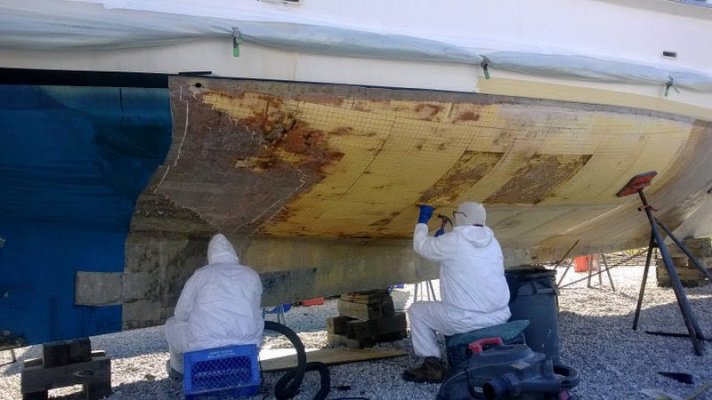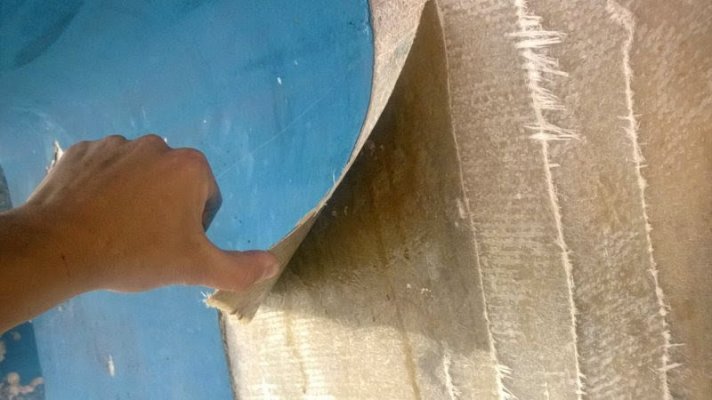psneeld
Guru
I believe you are supposed to dry after peeling the hull. While gel coat is not a waterproof barrier, is still a barrier to moisture and greatly slows drying even with vacuum. Grinding is preferred to peeling as the grinder operator only stops when wetness and delamination is gone.
His job was similar to mine, I recovered with 6oz cloth after the deeper repairs of roving and cloth. Then a filler layer of epoxy, then finished with Interlux 2000 system.
Once your hull goes beyond simple blisters, it's rolling the dice to see how bad hydrolysis will get and how fast.
His job was similar to mine, I recovered with 6oz cloth after the deeper repairs of roving and cloth. Then a filler layer of epoxy, then finished with Interlux 2000 system.
Once your hull goes beyond simple blisters, it's rolling the dice to see how bad hydrolysis will get and how fast.
Last edited:


